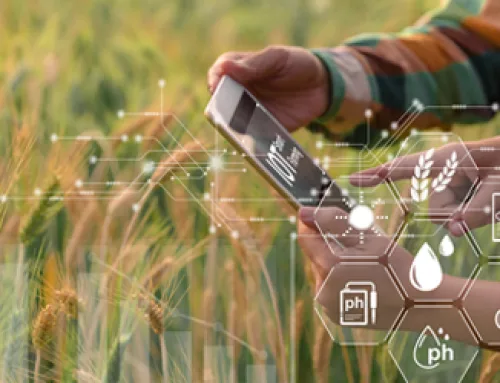Precision Agriculture in the USA: Advancements and Adoption Across States
Precision agriculture, also known as smart farming or precision farming, is revolutionizing the agricultural industry in the United States. This innovative approach leverages technology to optimize farm operations, increase productivity, and reduce environmental impact. From the rolling plains of the Midwest to the vineyards of California, precision agriculture is transforming the way agribusinesses manage their land and crops. In this blog post, we will explore the advancements and adoption of precision agriculture across different states in the USA.
Challenges and Opportunities:
While precision agriculture offers numerous benefits, including increased efficiency, productivity, and sustainability, it also presents challenges and opportunities for agribusinesses and stakeholders. One of the main challenges is the initial cost and investment required to adopt precision agriculture technologies, including equipment, software, and training. Additionally, there may be barriers related to data privacy, connectivity, and interoperability between different systems and platforms.
However, these challenges are outweighed by the opportunities that precision agriculture presents for agribusinesses to improve their bottom line and environmental stewardship. By embracing precision agriculture, agribusinesses can reduce input costs, optimize resource use, and mitigate environmental impact, leading to long-term sustainability and resilience. Furthermore, precision agriculture opens up new avenues for collaboration and innovation, as agribusinesses, researchers, and technology providers work together to develop and deploy cutting-edge solutions for the agricultural industry.
Advancements in Precision Agriculture:
Precision agriculture encompasses a wide range of technologies and practices aimed at maximizing the efficiency and sustainability of farming operations. One of the key advancements in precision agriculture is the use of global positioning system (GPS) technology to precisely map fields and track the location of farm equipment. GPS-guided tractors and implements enable agribusinesses to perform tasks such as planting, spraying, and harvesting with unprecedented accuracy, reducing overlaps and minimizing input waste.
Another significant advancement in precision agriculture is the widespread adoption of unmanned aerial vehicles (UAVs) or drones for crop monitoring and management. Drones equipped with high-resolution cameras and sensors can capture aerial imagery of fields, providing valuable insights into crop health, nutrient deficiencies, pest infestations, and irrigation needs. By analyzing drone imagery, agribusinesses can make informed decisions about crop treatments, optimize inputs, and identify areas for improvement.
Furthermore, precision agriculture relies on data analytics and decision support systems to analyze and interpret large volumes of data collected from various sources, including sensors, satellites, and farm machinery. Advanced analytics algorithms can generate actionable insights and recommendations to help agribusinesses optimize planting decisions, manage field variability, and maximize yields. These data-driven approaches enable agribusinesses to make informed decisions in real-time, leading to improved productivity and profitability.
Adoption of Precision Agriculture Across States:
The adoption of precision agriculture varies across different states in the USA, depending on factors such as farm size, crop type, and technological infrastructure. In states with large-scale commodity crops, such as corn, soybeans, and wheat, precision agriculture adoption is widespread among agribusinesses that are looking to optimize input use and maximize yields. States like Iowa, Illinois, and Nebraska are leading the way in precision agriculture adoption, with a high density of GPS-guided equipment and precision farming practices.
In regions with specialty crops, such as fruits, vegetables, and nuts, precision agriculture adoption is also on the rise as agribusinesses seek to improve efficiency and quality in their operations. California, known for its extensive fruit and vegetable production, has seen significant growth in precision agriculture adoption, particularly in the wine and grape industry. Vineyard managers are using precision viticulture techniques, such as soil mapping, canopy monitoring, and yield mapping, to optimize grape production and quality.
Moreover, precision agriculture adoption is not limited to large-scale commercial farms but is also gaining traction among smaller and mid-sized operations across the country. As technology becomes more affordable and user-friendly, agribusinesses of all sizes are embracing precision agriculture tools and techniques to stay competitive in an increasingly complex and demanding market.
Future Trends in Precision Agriculture
Looking ahead, the future of precision agriculture looks promising, with several emerging trends shaping the industry. One notable trend is the increasing integration of artificial intelligence (AI) and machine learning algorithms into precision agriculture systems. AI-powered analytics can analyze large volumes of data collected from sensors, satellites, and drones to provide actionable insights and predictive recommendations for agribusinesses. This enables more efficient decision-making and optimization of farm operations, leading to improved productivity and profitability.
Another trend is the development of autonomous farming equipment and robotic systems. Autonomous tractors, drones, and robotic harvesters are being deployed to perform a wide range of tasks on the farm, from planting and spraying to monitoring and maintenance. These technologies offer the potential to reduce labor costs, increase operational efficiency, and improve safety by automating repetitive and dangerous tasks.
Additionally, there is growing interest in the use of blockchain technology to enhance transparency and traceability in the agricultural supply chain. Blockchain can provide secure and immutable records of transactions and data exchanges, allowing stakeholders to track the provenance of food products from farm to fork. This can help improve food safety, prevent fraud, and build consumer trust in the agricultural industry.
The Way Forward for Precision Agriculture in the USA
Embrace of Precision Agriculture:
- Agribusinesses understand the benefits of precision agriculture ● Adoption of precision agriculture in the USA
Commitment to Innovation:
- Ongoing commitment to innovation and technology adoption
- Collective effort towards long-term prosperity and sustainability
Overcoming Challenges:
- Steadfast dedication to overcoming challenges
- Leveraging advancements for growth and resilience in the agricultural sector
In summary, precision agriculture has undergone a profound transformation across the United States, reshaping farming practices and yielding significant advancements in technology adoption. The widespread adoption of precision
agriculture across different states underscores its relevance and impact in the agricultural landscape. Get in touch with us to learn more about the significance of precision agriculture in the United States.



